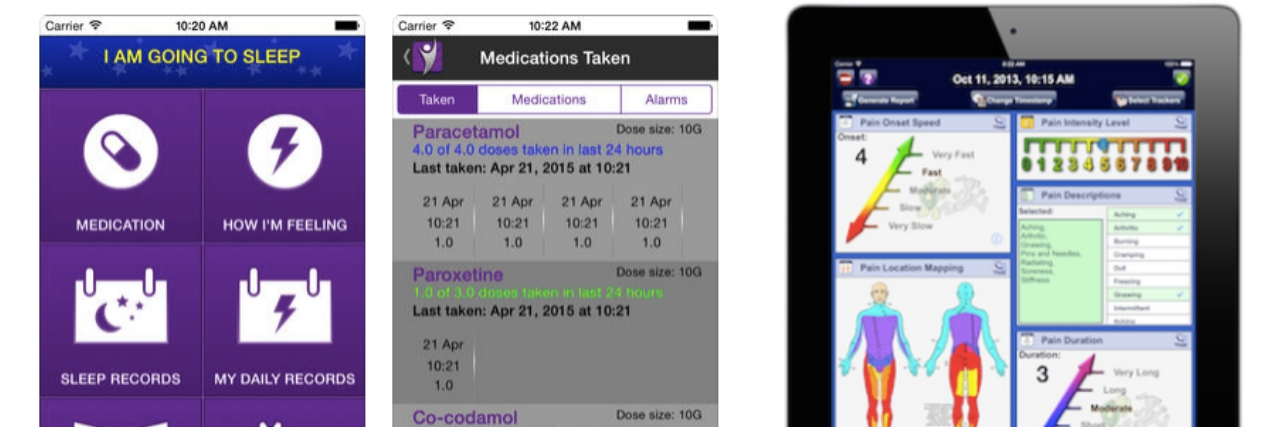One of the biggest pieces of advice people with chronic pain hear is to keep track of their pain each day. It’s actually a good tip: That way, you can remember your triggers and identify trends over time, which can help you figure out which medications and treatments are working, and even potentially learn more about what’s causing your pain. Another huge advantage: Pain tracking helps you give a more detailed picture of your health to your doctor. After all, everyone knows how easy it is to forget things when you’re sitting in front of him or her!
Some people find it easiest to jot down notes in a physical calendar or journal (you can even make your own), while others prefer an “electronic” system. That’s where apps can come in handy — you can update it wherever you are, email or print entries for your doctor, identify trends, and easily keep track of a wide variety of symptoms, triggers and treatments.
There are several pain tracking apps available now, many of them free or for just a small fee. To help you decide which app might be right for you, we asked our chronic pain community for their recommendations. Love an app that’s not featured here? Let us know in the comments!
1. Chronic Pain Tracker
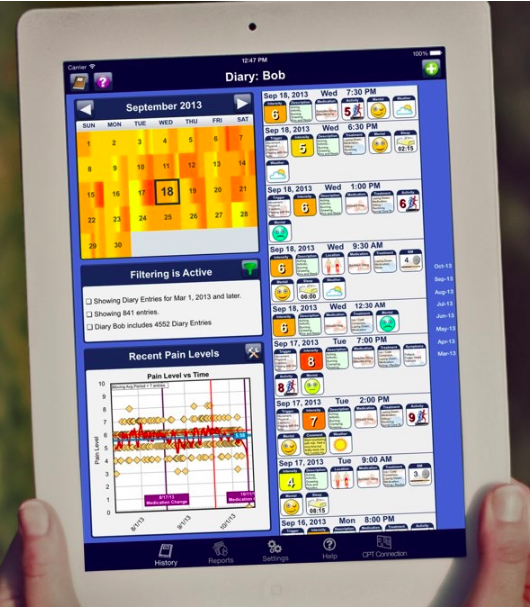
This app features 19 tracking “modules,” including triggers, treatments, location, intensity, duration, mental state, activity level, weather, body weight, sleep and more. You can then analyze the data with charts and graphs, and download your diaries to show your doctors.
“I have been using this app for over five years and I’ve never found anything else that keeps track of my issues and lets me adjust my symptoms and other things like this app does. There’s no yearly payment on the app, you pay for the premium version and then you own it… You can download the information to your email address so that your doctors can get a look at the information that you have been tracking. My doctors like this app. I love this app,” Mighty user Chronic Illness Stinks said.
Download the Chronic Pain Tracker app for $6.99 (after a free trial) from iTunes.
2. GeoPain
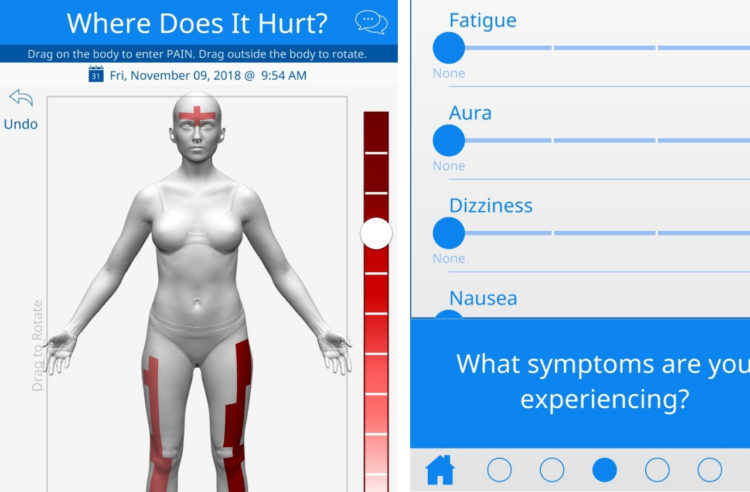
Founded by researchers at the University of Michigan to track pain in people participating in migraine and chronic pain studies, GeoPain’s central feature is a 3D body on which you can draw your pain. It also includes “trackers” for side effects, triggers and treatments.
“I use GeoPain. I like it because it lets me color the areas that hurt and shows a sliding scale of intensity instead of just a 1-10 scale, it’s a 3D model, it shows trends and gives you stats about your pain which is helpful when the doctor asks about the average pain rating, you can add other details like other symptoms and how it interferes with your day, etc.,” Emily Davis said.
Download GeoPain for free from iTunes and Google Play.
3. My Pain Diary & Symptom Tracker
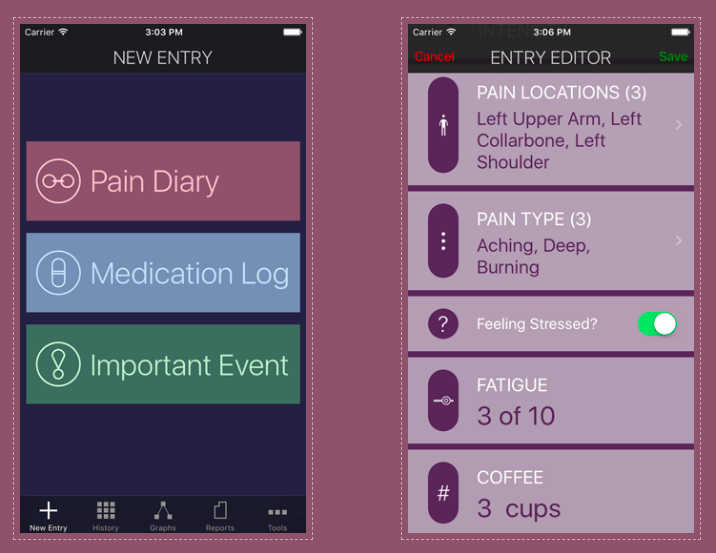
My Pain Diary was created by a man with chronic pain who says he was “formally trained in design and self-taught in programming,” so this app was really made by and for patients. You can track the location and intensity of your pain, update a medication log, note the weather and you can also look back at all past entries and graph trends over time.
“My Pain Diary & Symptom Tracker. It’s very thorough, lets you customize what your pain scale is like, what number would be considered intense. Make notes, and lets you track your depression and anxiety too! I also love that you can put what triggered the pain, what helps it, and it graphs all of it! It’s all around just a very thorough app,” Ashley Hand recommended.
Download My Pain Diary for $4.99 from iTunes.
4. MySymptoms
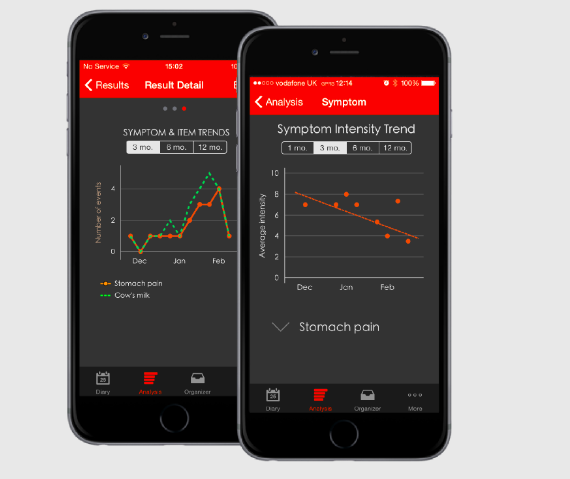
The founder of MySymptoms lives with food intolerance and irritable bowel syndrome, so the app gears towards tracking diet and symptoms, as a “food journal.” Users can record their diet, symptoms, medication, sleep, stress, exercise and environmental factors. Graphs help you see if there are any connections between symptoms and the other factors.
“MySymptoms. I like it for sure. It’s thorough. It’s a drag inputting all the info but that’s not the app’s fault, it just makes you aware every day how many moments there are that can affect symptoms,” Jacqueline Borchert said.
Download MySymptoms for £2.99 from iTunes and Google Play.
5. Migraine Buddy
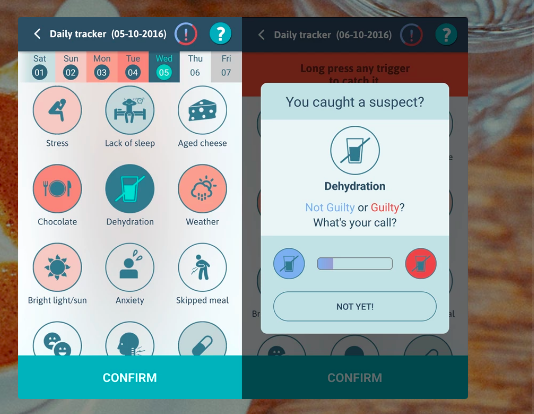
This popular app is tailor-made for people with migraine. The factors you can track, including location of pain, triggers and lifestyle factors, are all specific to migraine. It also features an automatic weather tracker and can send you a notification of the next 24 hours forecast.
“For tracking my headaches and migraines I use the app Migraine Buddy. It is very detailed, you can track your triggers, symptoms, and what treatments help you relive the pain. Then there are reports from over time to look at everything. It’s a great app for migraine tracking!” Melanie Grief said.
Download Migraine Buddy for free from iTunes and Google Play.
6. PainScale
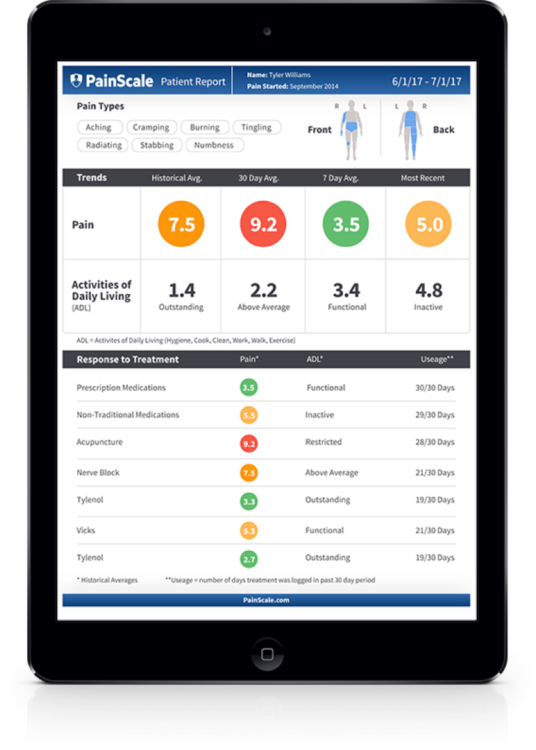
In addition to tracking your symptoms, medication, treatments, activity, mood and sleep, you can also check out the app’s “community” feature, to see how other people with similar conditions manage their pain. The app also includes a library of articles and videos from medical sources, if you’re looking for more information on your condition and treatments.
“My podiatrist recommended PainScale and it’s so easy to use! I use that for my pain, and Migraine Buddy for my migraines and sleep,” Abi Stillwell explained.
Download PainScale for free from iTunes and Google Play.
7. Year in Pixels
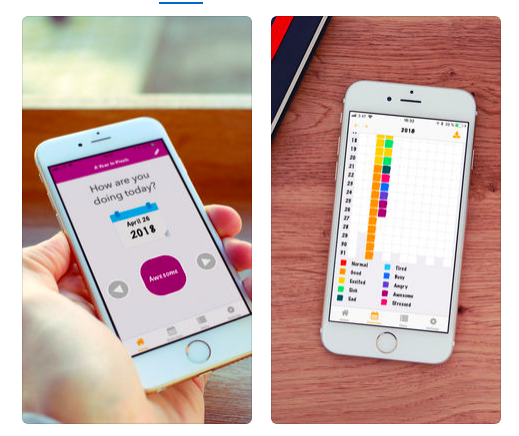
Unlike the other apps featured in this list, Year in Pixels was not designed specifically to track chronic pain. But it can still serve that purpose. The app asks you to rate how your day was, assigning a color to your rating. You can add the emotions you felt that day and also a diary entry to give additional details.
“Year in Pixels, I find it good because you can set it to remind you every day to complete an entry. Plus it’s free on Android,” Seamus Eustace said.
Download Year in Pixels for free (+$0.99 to $14.99 for in-app purchases) from iTunes and Google Play.
8. FibroMapp Pain Manager
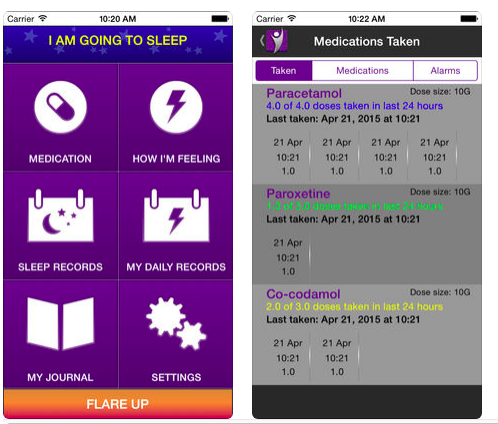
Designed by a web developer whose wife was struggling with fibromyalgia, FibroMapp allows users of any pain condition, such as arthritis, lupus and multiple sclerosis. In addition to trackers for mood, sleep, pain, fatigue, etc., there is also a medication tracker and alarm that helps ensure you aren’t over- or under-medicating. You can create printable and email-able reports for doctors and insurance.
Jo Moss recommended this app.
Download FibroMapp Pain Manager for $2.99 from iTunes and $2.84 from Google Play.
9. Flaredown
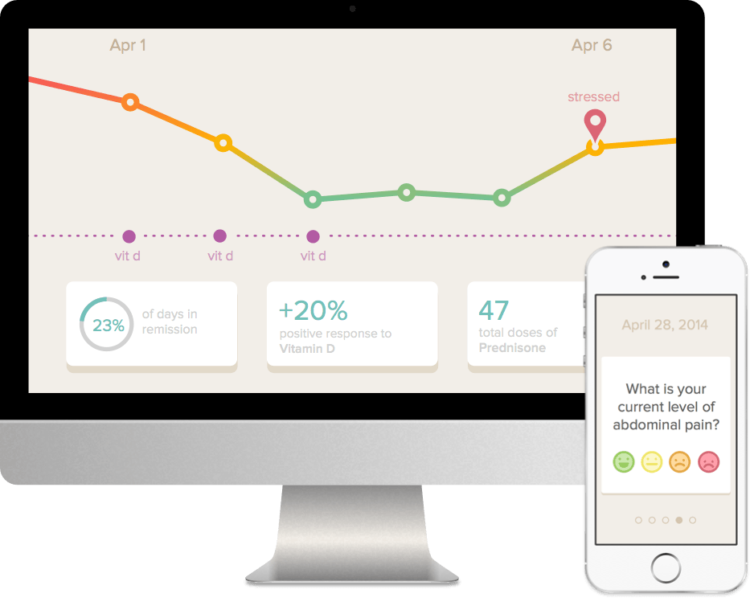
You can select the condition you are tracking symptoms for, and Flaredown will check with you every day with questions about how you’re doing. If the app doesn’t include the metric you’d like to track (though it does include tons of options like food, mental health, weather and activity), you can add it yourself.
“By far my favorite app to track my various symptoms!” Bay Howe said. “Makes it much easier to discuss symptoms and illnesses when you can remember what they are and when they happen.”
Download Flaredown for free from Apple or Google Play.

